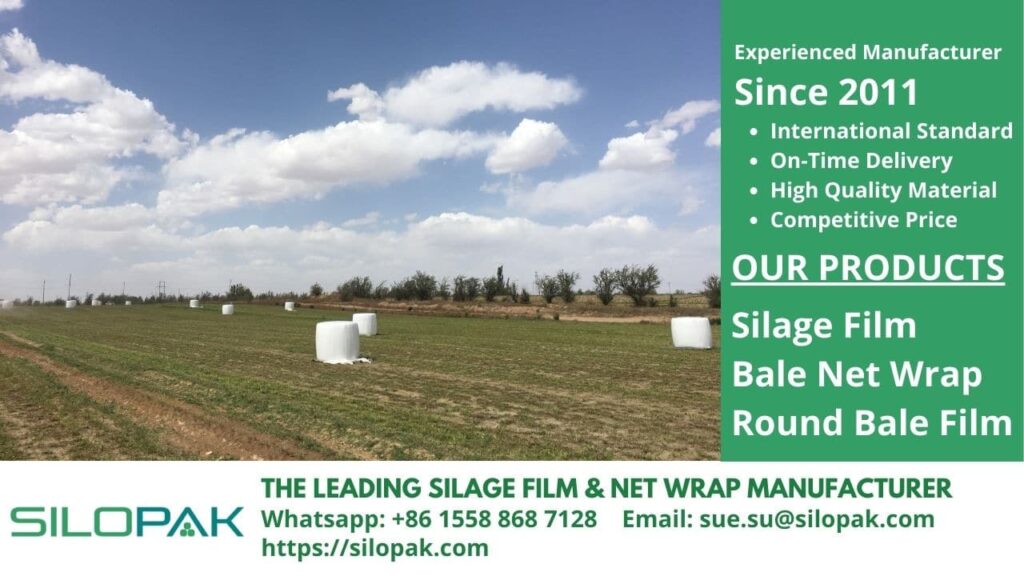Silage is a popular animal feed among farmers. Usually, they use silage to feed their cattle when grazing is not optimal, for example, during winter. Cattle, especially dairy cattle, need adequate energy and nutrition to produce good quality milk, while in winter, it is difficult to graze, and silage can maintain energy and nutrient intake for them.
Do you know how to produce silage? For those who do not know, here is an explanation.

contents
What is Silage?
Silage is an alternative feed for dairy cattle that have gone through a fermentation process. People analogize it like “pickled pasture”. It is usually made from grass crops such as corn, oats, sorghum, or other cereals (using not only the grains but the entire green plants). Generally, the types of plants that can be converted into silage are thick-stemmed plants, whereas thin-stemmed plants are usually conserved as hay.
How to Produce?
In producing silage, consider the following points:
Best Harvesting Stage
The best harvesting stage is when the plant is between the flowering stage and the milk stage.
Silo
For the efficiency of silage production, it is recommended that the silo space used has a size that is appropriate to the number of dairy cows to be fed and the length of the feeding period. Usually, a silo with a size of 1 cubic meter can be used to accommodate 400 kg of animal feed for silage.
For those of you who may not know, a silo is a place for storing and preserving animal feed to be used as silage. The structure is designed to be airtight and has high humidity with an average size of the silo hole depth of 2.5-3 meters, while the width varies.
Preparation
- Plants for silage should already have 30-35% dry matter.
- Chop plants to minimize nutrient loss during the production process and to make it easier to pack later.
- Distribute the plants into the silo holes evenly.
- Add 0.5% salt and 1% urea to the crops to increase palatability and nitrogen content.
- At the top, make sure the plants are packed at least 3 feet above ground level.
- Cover all sides with long rice straw or poor-quality grass, then cover the top with mud and wet dirt to prevent air and water from entering. The size of the layer thickness is usually about 4-5 inches.
Fermentation
Silage production employs two fermentation methods. The first involves lactic acid fermentation. Here, anaerobic lactic acid bacteria activate in animal feed plants. These plants contain up to 75% water and sufficient sugar. This process yields silage with a clean, sourish smell and a pH of 4, indicating high quality.
The second method uses butyric acid fermentation. It happens when feed plants are protein-rich. This leads to silage with a strong, acidic smell. Dairy cattle dislike this smell because butyric acid is strong and unpleasant.
To ensure complete fermentation, store feed plants with 65%-75% moisture, excluding air. This condition accelerates lactic acid bacteria growth and reduces nutrient loss from respiration. It also inhibits fungi and aerobic organisms.
Fermentation starts as silo temperatures reach 27-38 degrees Celsius. In two months, plants transform into silage.
Color
The silage color change will occur because organic acids react with chlorophyll and convert it into brown pigment because it is free of magnesium and pheophytin. The color of the silage will be yellowish-green or golden when the silo is at moderate temperature. Meanwhile, when the silo is at a high temperature, the color of the silage will change to dark brown or black.
Quality Indicator
The following are some indicators to determine the quality of silage:
- Very good quality silage has a clean sourish taste and smell (a sign that it is free from butyric acid) and is not moldy nor slimy. In addition, it has a pH level between 3.5-4.2, ammonia nitrogen less than 10% of the total nitrogen, and 1% -2% lactic acid.
- Silage with good quality has a quite strong sourish taste and smell (a sign of butyric acid content). Its pH level is between 4.2-4.5, and its ammonia nitrogen content is between 10-15% of the total nitrogen.
- Silage with standard quality has a very strong sourish taste and smell (a sign of high butyric acid content) and is slightly moldy. Its pH level is high at 4.8, and its ammonia nitrogen content is 20%.
Now you understand the production of silage for dairy cattle. We recommend packing the silage in high UV resistance silage film to preserve its quality and nutrition effectively. For those in need of high-quality film silage, Silopak stands as the best choice. As a specialist manufacturer with over ten years of global experience in silage film and bale net wrap, Silopak ensures customer satisfaction with all its products. Place your order now!

